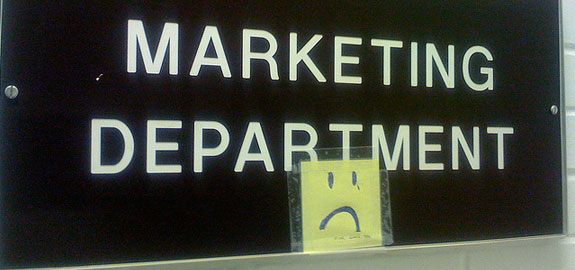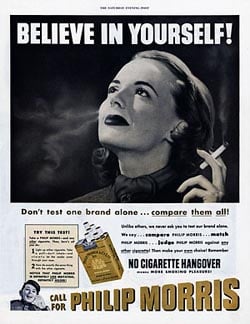
| Every year the American Society of Landscape Architects surveys its members who specialize in residential design and asks them to “rate the expected popularity of a variety of residential outdoor design elements”. These popular trends are important to know for any garden marketing executive who wants to get ahead of the curve. Not surprisingly, the category of gardens and landscape spaces was at the top of the list with a 96.6% rating it somewhat or very popular. It was followed closely by kitchen and entertainment outdoor livings spaces at 91.5 percent. Surprisingly, across all categories grills rated higher – 97.4% than the demand for low maintenance landscapes which scored a close 96.6%, followed by fireplaces/fire pits - 95.8% and dining areas 95.7%. Which leads ASLA to conclude Americans want outdoor spaces for lots of entertaining that are not demanding on their time? This easy living at home in backyards for entertaining has been a trend since we first saw it emerging in 2001, and this love affair with the backyard shows no sign of slowing down. According to the 2012 Residential Landscape Architecture Trends survey, consumers still want kitchens and dining options, comfortable seating, and water features. Lighting remains popular with a score of 93.1% “as Americans plan to take more of their lives outside once the sun sets.”
The economic recovery and bad real estate market continues to drive Americans to stay home and turn their yards into a paradise. The staycation is still alive and well. The survey showed that Americans still love their pools (79.2%), but love their spas a little more (80.4%). But other decorative water elements such as waterfalls or bubblers top even those scoring almost 90%. The good news for gardening companies is that Americans are being more practical and sustainable in their gardening practices. Some 86.3% say their customers want native plants -- yeah! -- 85.4% drought-tolerant plants and 81.2 % are planting food/vegetable gardens. And more than half of them prefer to be organic 61.2%. There is hope. Additional information on residential landscape architecture can be found at www.asla.org/residentialinfo.
| Want to know more trends? Download our 2013 Garden Trends Report hot off the presses from the OFA Short Course. |
|

Read More
Topics:
lawn and garden public relations,
garden marketing,
horticultural marketing communications,
Garden Media Group,
garden industry public relations,
Garden Trends
Creating a marketing strategy is like raising a flag for your company. You want people to know you exist and are open for business. But before you raise that flag, you have to make sure you have a clear design.
Read More
Topics:
Public relations,
lawn and garden public relations,
PR Strategy
Listen to this anecdote by Sheldon Baker, Senior Partner
at Baker Dillon Group, and see if you can determine what this company could have done better:
Recently, I met with a retired business executive (we'll call him Tom), I hadn't seen for over 15 years. During our visit, Tom and I talked about the many public relations strategies that were developed for his company. He originally hired me to help orchestrate the public relations strategy of his firm that was merging with another company. One of initial projects included developing a new corporate brochure that required design, photography and copywriting.
Read More
Topics:
lawn and garden public relations,
hiring a public relations person,
garden PR consultant,
lawn & garden public relations,
garden industry public relations
In the last column we disucssed 3 rules you'll want to follow when hiring a PR firm to represent your business. In this column, you will learn 3 more tips, all cultivated from Nelson Hudes.
Read More
Topics:
Public relations,
PR Strategy
Working with professional public relations consultants reflects a significant step up in the communications of any organization. More and more organizations are turning to professional public relations (PR) consultants for assistance with publicizing their company and issues and creating various marketing projects.
Read More
Topics:
Public relations,
PR Strategy
We love to report annual results in the Lawn and Garden industry, especially when they're up! And clearly, the American love affair with the back yard shows no signs of slowing.
Read More
Topics:
lawn and garden public relations,
trends

Margie Zable Fisher runs a website
theprsite.com with the goal of helping small business find the right PR firm for them.
In this post, she explains to Guy Kawasaki the top ten reasons why PR doesn’t work:
-
The client doesn’t understand the publicity process. PR folks need to better educate people about how publicity works. The first thing many clients ask is, “Can you get me on Oprah or the front page of the Wall Street Journal?” The answer might be “yes,” but the process to get to the “yes” may take months or years, and may first include a series of smaller placements.
-
The scope of work is not detailed and agreed upon by both parties. Here’s a typical example: a client signs an agreement to spend $3,000 per month. Client expects to get three publicity placements per month. PR person expects to work 20 hours, regardless of the outcome. The inevitable disconnect leads to customer frustration and the feeling of being “burned.”
-
The client has not been properly trained on how to communicate with the media. Proper training for interviews is crucial; otherwise, key messages can be misconstrued, and even negative stories can result. Clients seldom blame themselves when this happens.
-
The client and the PR person or firm are not a good match. Example: Client hears about a local PR person, meets and likes the PR person, and figures it’s a good match. Or the client chooses the lowest price PR option. And the PR person, instead of referring the client to another practitioner who is a better fit, decides to take on the client—and the money.
-
The client has not gotten results quickly enough and ends the relationship too soon. Client should plan on conducting a campaign for a minimum of six months. And even that is aggressive. A year should really be the bare minimum to commit to PR The media works on its own timetable, which is usually much longer than the client’s.
-
PR people don’t explain the kind of publicity placements a client will most likely receive. Every client wants a big profile of the company on the cover of a major magazine or newspaper, but most stories are about a “trend,” several companies, or some recent news with quotes from experts. Profiles are few and far between. Yet, instead of explaining this, PR people often tell potential clients what they want to hear, in order to get the business.
-
Clients don’t realize that what happens after you get the publicity coverage is sometimes more important than the actual placement. My smartest client didn’t care if he got a quote or a profile—he just wanted to be included in major media. When it was time to get an agent and publisher for his book, he handed them a list of all his media placements, and this clinched the deal. The agent and publisher figured that if all of the major media was willing to include him as a source, then he must have something important to say.
-
Clients refuse to be flexible on their story angles. One of my clients once said to me, “We only want profiles.” When the media wasn’t interested, they refused to consider other story angles that the media was interested in. Now I make sure clients are willing to have us pitch three to four angles.
-
Clients get upset when the media coverage is not 100% accurate or not the kind of coverage that they wanted. One of my former clients said, “That TV segment on me was only a minute long.” When I explained that length of time was impressive in TV Land, she refused to understand.
-
Clients won’t change their schedules for the media. Clients need to drop everything if the media calls. This may be inconvenient, but the media waits for no one. If you want to be a “media darling,” then you need to make yourself available at any time. Those who do will reap the best benefits and placements.
Read More
Topics:
Public relations,
branding,
advertising vs public relations
Today, few people outside the public relations (or inside for that matter) profession recognize the name of Edward L. Bernays, although he was named one of the 100 most influential Americans of the 20th century by Life magazine.
Public Relations is a 20th century phenomenon, and Bernays -- widely eulogized as the "father of public relations" -- played a major role in defining the industry's philosophy and methods.
Read More
Topics:
Public relations,
marketing communications
























